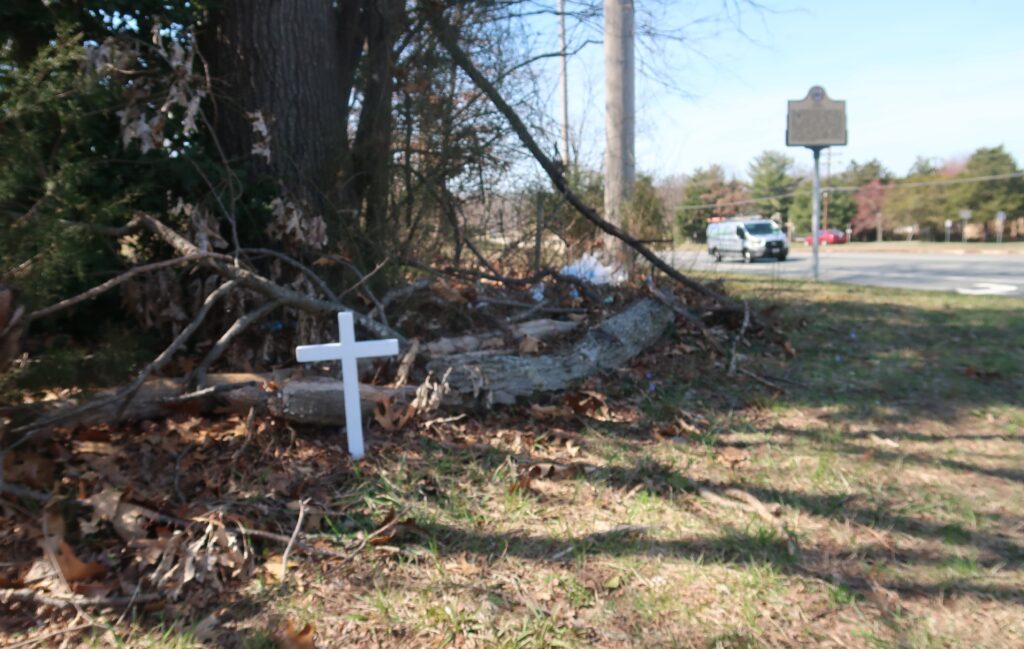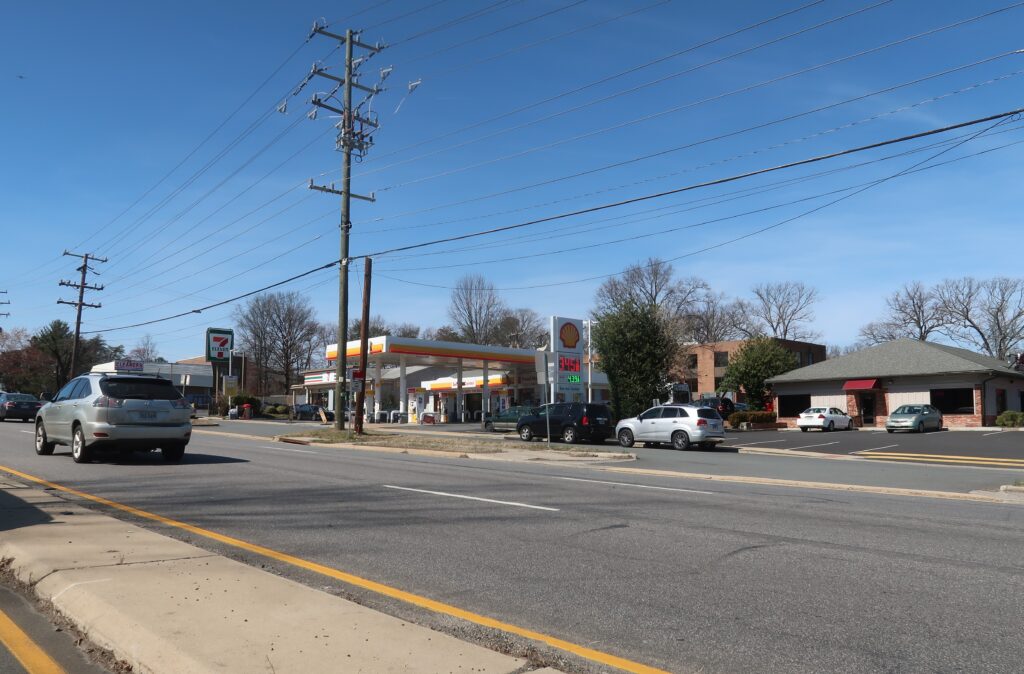Ilda was a mixed-race community on Little River Turnpike

Driving along Little River Turnpike at the western edge of Annandale – with houses on one side and shops and restaurants on the other – there is little evidence that there was once a small, mixed-race community here called Ilda.
All that remains of Ilda is a historic marker and the name of the Ilda Community Recreation Association on Braeburn Drive.
The historic market says the settlement was founded after the Civil War when two freedmen, Horace Gibson and Moses Parker, established a blacksmith shop on Little River Turnpike. According to tradition, the name “Ilda” was a contraction of “Matilda Gibson Parker.”
Tom Shoop, a former resident of that area, felt there was a lot more to the story and wrote a book, A Place Called Ilda: Race and Resilience at a Northern Virginia Crossroads, which was published this year by the University of Virginia Press.
At a recent presentation at George Mason Regional Library, Shoop called the founding of Ilda “a highly compelling story of two Black entrepreneurs who made the most of their freedom.” This happened at a time when there were plantations nearby, like Oak Hill, that “existed to exploit the labor of Blacks.”
At that time, Little River Turnpike was a country road that served people going to the courthouse in Fairfax and farmers taking their produce to market.
“The blacksmith shop became the cornerstone of Ilda,” Shoop said. “It was rare during those times following the Civil War to have a mixed-race community anchored by a Black-owned business.” Gibson and Parker eventually expanded their business and were seen as the leaders of Ilda’s Black residents.
By the late 1800s, the two men owned more than 400 acres, and some of the children also owned land. They both had large families. Parker and his wife had 12 children; the Gibsons had nine.

At the height of Ilda, in the 1890s, the community was home to about 40 to 50 families – and less than 200 residents – spread out on small farms.
By then, Ilda had a post office, school, church, and a couple of small stores.
Gibson and Parker had their share of troubles. Gibson fell victim to horse thieves, was accused of stealing a horse, and won a lawsuit to clear his name.
A man named Franklin Minor once terrorized the community. He had a habit of shooting at his neighbors and threatened Gibson with violence, Shoop says.
Years later, Minor shot Gibson when they were both in their 70s. Gibson lived another 14 years and died at the age of 95. Parker died in 1887 at age 62. The blacksmith shop closed in 1910.
Related story: A local Black community honors its history
As Reconstruction gave way to the Jim Crow area, Black kids had to walk by a Whites-only school to get to their school in Merrifield.
After Wakefield Forest Elementary School began admitting Blacks, boys and girls were taught in separate classrooms, Shoop notes. That was done because it was thought that boys would do better if they didn’t have to compete with girls.
Much of the history of Ilda was documented by Dennis Howard. A White teacher assigned her students to write a family history, which Howard found impossible but took it up as a challenge. He learned that his great-great grandfather, Horace Gibson was a formerly enslaved blacksmith who founded Ilda.
That class project turned into a 40-year quest, as Howard continued to document his family history and discovered the existence of a former cemetery containing the graves of enslaved people on the corner of Little River Turnpike and Guinea Road.
At Howard’s urging, the Virginia Department of Transportation, which was planning to widen Little River Turnpike, agreed to have the bodies relocated. They were moved to the Pleasant Valley Cemetery on the other side of Little River Turnpike.
There’s a small white cross at the site of the old cemetery.

As Fairfax County transitioned from a rural backwater to a growing suburban outpost after the Second World War, Ilda gradually receded into the memories of former residents. It disappeared for good in 1950 when the Lee Forest subdivision was developed – with a covenant banning Black home buyers.
While that side of Little River Turnpike remained residential, the northern side was devoted to commercial development. There was a Gino’s Hamburgers in the 1950s, Shoop noted. That building later housed a Pizza Hut, and now it’s a Japanese restaurant. The CVS is on the spot where the Ilda school used to be.
Shoop’s book recounts lots of little stories about early life in Fairfax County. In 1930, for example, Ilda residents were startled when beans started raining down on their fields. It turned out they were seeds from sour gum trees, not beans. Starlings and blackbirds had eaten the fruit from the tree and spit out the seeds.

Thank you for sharing this interesting history of the area.
Thanks for sharing this! I often wondered about the origin of the name Ilda.
Was not expecting this beautiful American story.
Sorry our ancestors were such racists- and our own government wrote laws to separate its citizens. Put up a bigger historic marker with links to more information. It would be more helpful to future generations of Virginia’s citizens than changing the name of Lee highway imho.
Our ancestors had real wisdom.
???
Are you serious??
100%. Look around. How blessed are you? Who is responsible for what you enjoy? Who makes life better and who makes life worse? Be honest.
This statement shows a great example as to what is wrong still in this country. If you do real research on many of the comforts you enjoy, creature comforts, you would really be surprised.
Such a great idea!!
Thanks so much for this! I wondered about the origin of the name Ilda. Had no idea that there was this beautiful American story behind it.
As a mixed-race of white, freedmen and Nat Ams, my mother’s family and ancestors went through similar prejudicial treatment in the VA Blue Ridge, which is not taught in schools. Curious – If there was a school in Ilda where the CVS is now, then what school did residents have to walk to in Merrifield? Was the Ilda school a Whites-only?
As others have mentioned, superb read. Thank you
Fascinating! Great read!
That house belong to my great grandfather Lynn Aremtrout. I grew up running and playing at the home pictured above and the house nextdoor that was built by my great grandfather for his daughter my grandmother. Whom is still with us today. Although the property looked different than it does now and no matter how bad it looks I’m happy to be able to see it again. I’m 46 and truly grateful and blessed that I was able to be taught and learned from my great-grandfather who was an absolutely remarkable man and a superhero in the eyes of a 12-year-old.
Most of the schools were segregated in Fairfax County up into the 1970s. My high school, Annandale High School, did not integrate until 1975.
You can get a good sense of integration in the area by watching “Remember the Titans” starring Denzel.
Was Annandale High School safe and enjoyable in 1975?